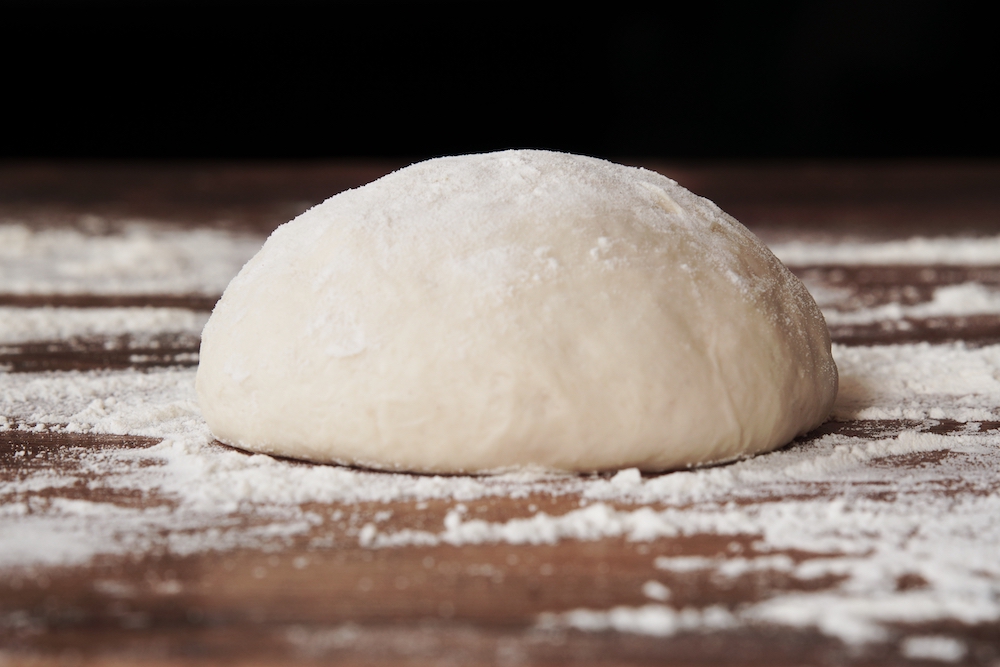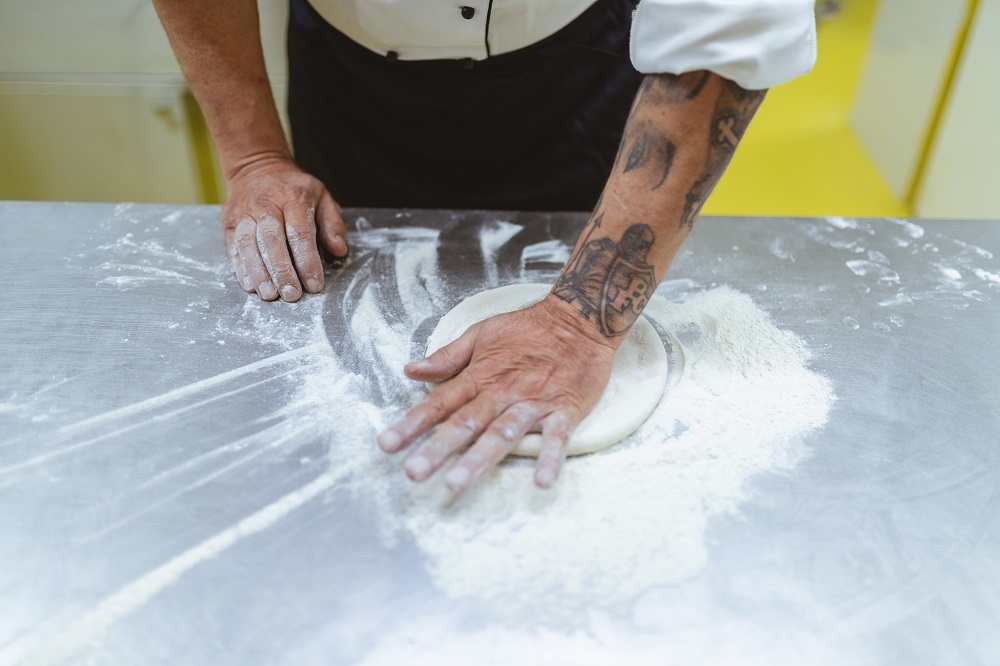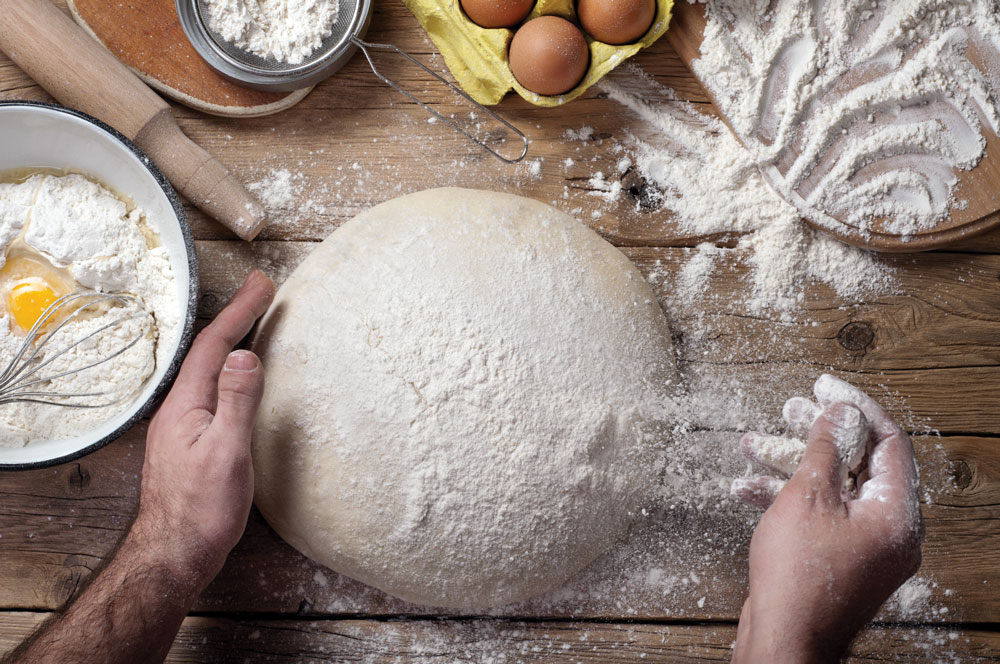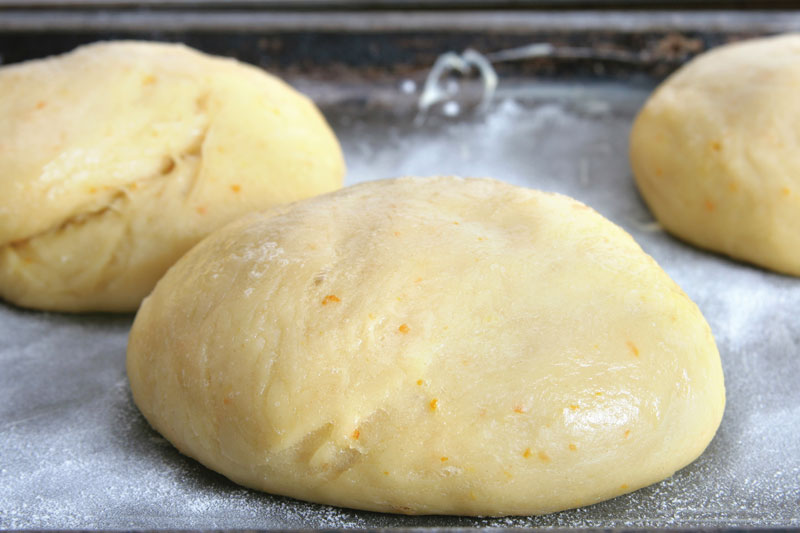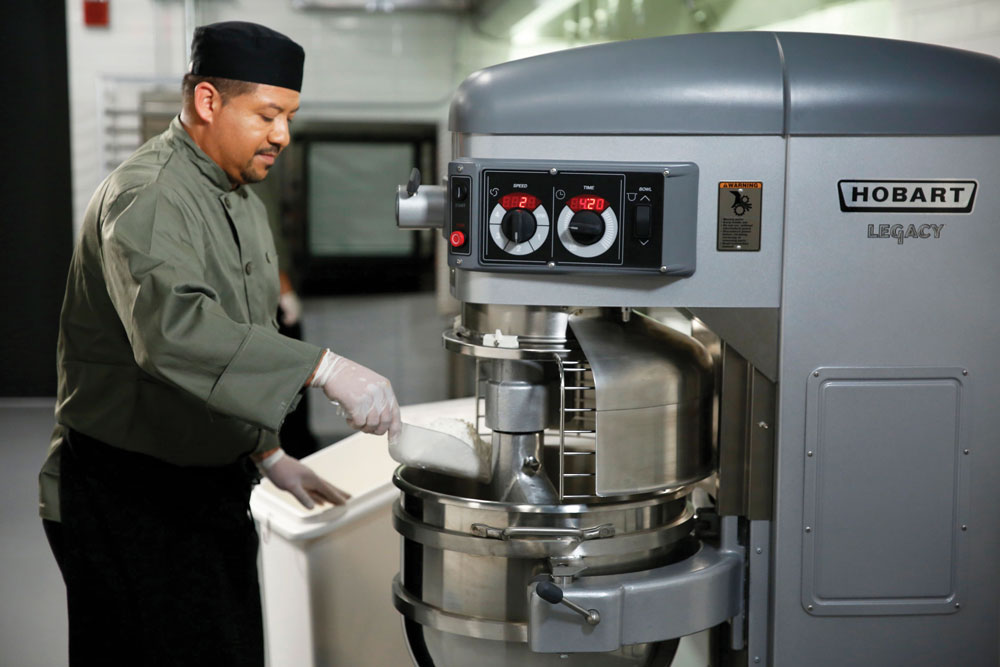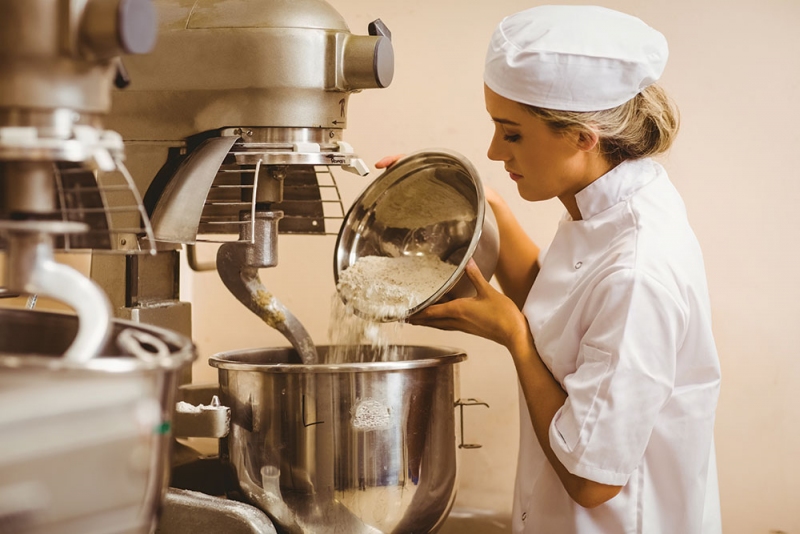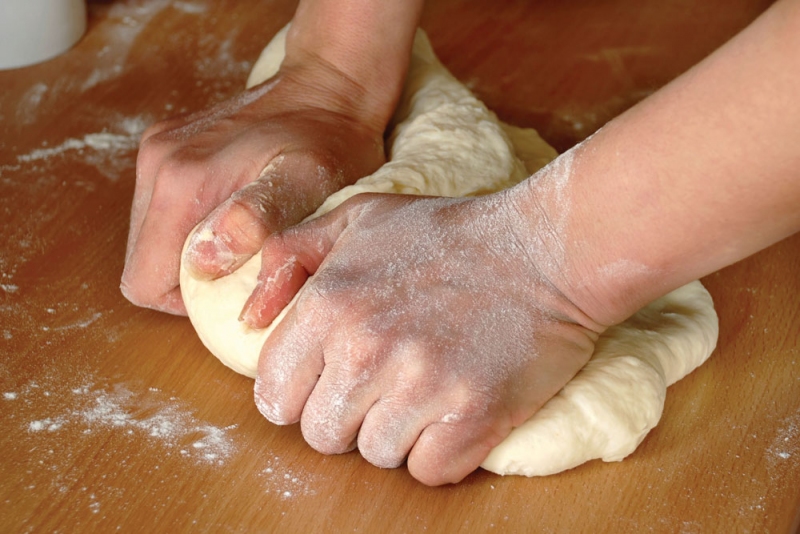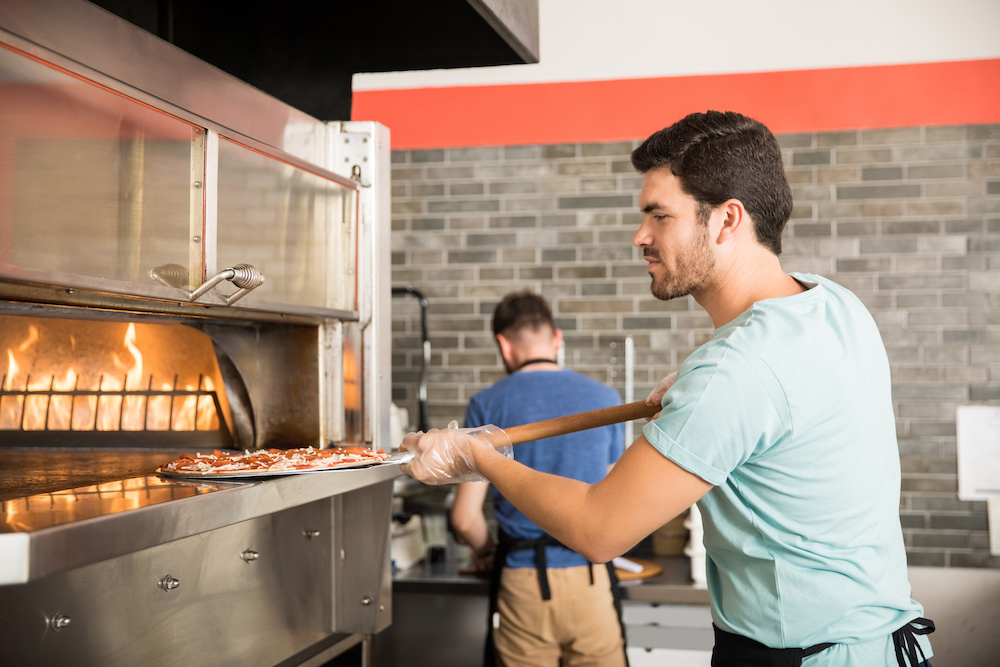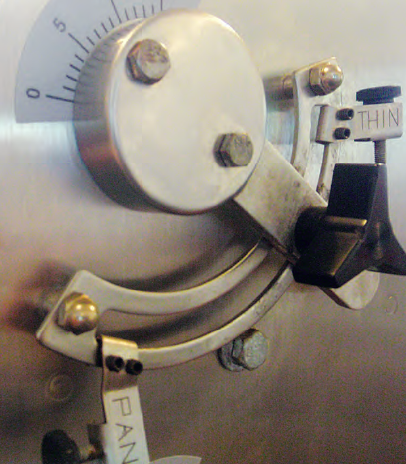 QUESTION:
QUESTION:
How do you use a sheeter to help with forming a hand-tossed dough?
ANSWER:
When setting the roll gap on the sheeter/roller, adjust it so the dough is sheeted out to only about 2⁄3 of the desired finished diameter; then finish opening the dough by hand tossing. This method helps to keep your dough skins from having an overly thin center section, and if you are not proficient at opening dough balls completely by hand, it will increase your speed while allowing you to develop the necessary proficiency to ultimately open the entire dough ball by hand.
QUESTION:
I’ve heard that if we add milk to our dough formula, we should first scald it by heating it to a fast simmer. Why?
ANSWER:
Liquid milk and most dry milk contain certain whey proteins that are detrimental to dough quality in that they produce a certain weakening of the dough structure. This problem is easily addressed by heating the milk to denature the offending whey proteins. To scald liquid milk, simply put it into a suitably sized container and heat until it just comes to a fast simmer or a light boil. To heat dry milk, add water to it, and then proceed with scalding. Another option is to purchase bakery-grade, high heat treatment dry milk solids from any bakery ingredient supplier. This product has already been heat treated, and requires no further heat treatment prior to use.
QUESTION:
What are the affects of hard and soft water and chlorine on pizza dough?
ANSWER:
All other factors being equal, soft water will produce pizza dough that is softer and slightly tacky as compared to dough made with hard water. Actually, hard water is better for dough than soft water. If you’re going to be putting in a water softening system, I’d suggest putting in a sink where you can draw hard water just for the dough. This line would be installed at a point before the water softener, and then the
rest of the store’s water supply can be softened. As for chlorine, you shouldn’t experience any ill effects on the dough, but you might want to consider an activated carbon type of filter to remove the chlorine taste from the water if it will be used in any of your beverages, such as coffee or tea, or in making ice for soft drinks.



